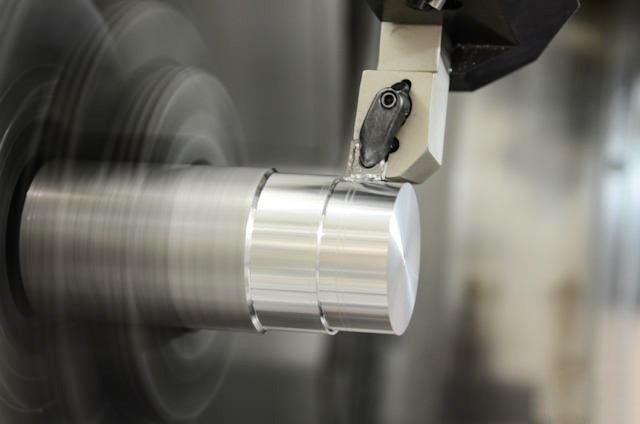Lathe turning is lathe processing and lathe machining is part of machining.

The turning machine mainly uses a turning tool to turn the rotating workpiece.
On the lathe, drills, reamer, taps, threading dies and knurling tools can also be used for machining.
Lathes are mainly used to machine shafts, discs, sleeves and other workpieces with a rotating surface.
It is the most widely used type of machine tool in machinery manufacturing and repairing plants.
Working principle
The workpiece rotates and the turning tool performs a straight or curved movement in the plane.
Turning is generally carried out on a lathe to machine the inner and outer cylindrical faces, end faces, conical faces, forming faces and threads of the workpiece.
When turning the inner and outer cylindrical faces, the turning tool moves in a direction parallel to the axis of rotation of the workpiece.
When turning the end face or cutting the workpiece, the turning tool moves horizontally in a direction perpendicular to the axis of rotation of the workpiece.
If the trajectory of the turning tool is at an oblique angle to the axis of rotation of the workpiece, the conical surface can be machined.
The surface of the turning body formed by turning can be formed by a forming tool method or a tool tip trajectory method.
During turning, the workpiece is driven by the spindle of the machine tool for rotation; the tool held by the tool holder is used for feeding motion.
The cutting speed v is the linear velocity (m/min) at the point of contact between the rotating workpiece machining surface and the turning tool.
The depth of cut is the vertical distance (mm) between the surface to be machined and the machined surface for each cutting stroke, but the contact length (mm) of the turning tool to the workpiece perpendicular to the feed direction during cutting and forming turning.
The feed amount indicates the amount of displacement (mm/rev) of the turning tool in the feed direction per revolution of the workpiece, and can also be expressed by the feed per minute (mm/min) of the turning tool.
When cutting ordinary steel with high-speed steel turning tools, the cutting speed is generally 25-60 m/min; the turning speed with cemented carbide turning tools can reach 80-200 m/min; the highest cutting speed with coated hard-metal turning tools is up to 300 m/min or more.
Turning is generally divided into two types: roughing and finishing (including semi-finishing).
The rough turning strives to increase the turning efficiency by using a large cutting depth and a large feed rate without lowering the cutting speed, but the machining accuracy can only reach IT11, and the surface roughness is Rα 20~10 μm.
Semi-finished and refined turning use high-speed and small feed and cutting depth as much as possible. The machining accuracy is up to IT10~7, and the surface roughness is Rα10~0.16μm.
High-precision fine-grained metal parts with high-precision diamond turning tools on high-precision lathes can achieve machining accuracy of IT7~5 and surface roughness of Rα0.04~0.01μm. This turning is called “mirror turning”.
If the concave and convex shape of 0.1~0.2 μm is polished on the cutting edge of the diamond turning tool, the surface of the turning will have extremely fine and irregularly arranged stripes, which will have a damask-like luster under the diffraction of light. As a decorative surface, this turning is called “rainbone turning”.
During turning machining, if the turning tool rotates at the same time, the turning speed of the turning tool (the tool speed is generally several times the workpiece speed) rotates in the same direction as the workpiece, so that the relative movement trajectory of the turning tool and the workpiece whose cross section is a polygon (triangle, square, prism, hexagon, etc.) can be processed.
If a longitudinal radial reciprocating motion is added to the tool holder for each revolution of the tool while the longitudinal direction of the turning tool is being fed, the surface of the cam or other non-circular cross section can be machined.
On the shovel lathe, the flank of some multi-tooth tools (such as forming cutters and gear hobs) can be machined according to a similar working principle, called “shovel back”.
Copyright © Jiangsu Hoston Machine Tools Co., Ltd. (Hongkong Hoston Group CO., LIMITED)All Rights Reserved | Sitemap Technical Support: 